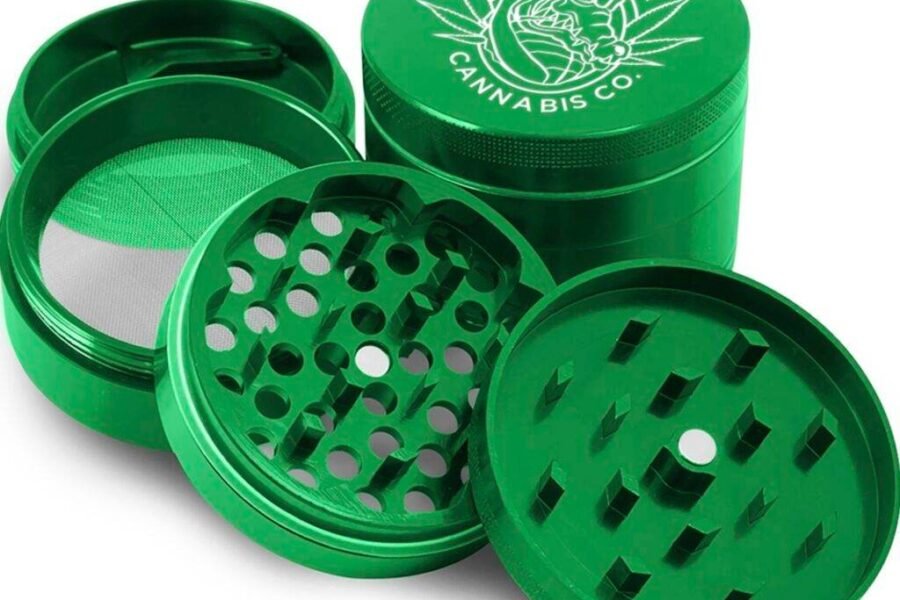Welcome to our informative blog post on the intriguing subject of “How Long Do Edibles Stay in Your Hair – The Science Behind Hair Drug Tests.” Have you ever wondered about the precise duration during which consuming edibles can be detected in your hair strands? Understanding the intricacies of hair drug tests is key in navigating potential consequences.
This blog post will provide you with essential knowledge on how long these substances remain detectable in your hair, allowing you to make informed decisions. But fear not, we will also explore mitigation strategies to ensure you are well-prepared and aware of the various factors influencing the results of such tests. So, let’s delve into the science behind it all!
Key Takeaways:
- Hair drug tests can detect the presence of edibles.
- Edibles stay in your hair for a much longer time compared to other drug metabolites.
- The metabolites from edibles can be detected in your hair for up to 90 days.
- Regular consumption of edibles can lead to a higher concentration of metabolites in your hair.
- Proper hair care can help reduce the chances of detection in hair drug tests.
How Long Do Edibles Stay in Your Hair?
Some of the most common questions related to edibles and drug tests are how long do edibles stay in your hair and how can they be detected. Hair drug tests have become increasingly popular in recent years due to their ability to provide a longer detection window compared to other methods.
If you’re curious about the duration of detectability for edibles in your hair, it’s essential to consider various factors that can influence the results. Before we delve into those factors, it’s important to understand that consuming edibles can indeed be detected in a hair drug test. To learn more about the detection period and the science behind it, you may want to check out How Long Does an Edible Stay In Your System?
Factors Affecting the Detection Window of Edibles in Hair
Several factors can influence how long edibles stay detectable in your hair. Here are some key considerations:
- Frequency of use: The more frequently you consume edibles, the more likely it is for the cannabinoids to accumulate and remain detectable in your hair for an extended period.
- Dosage: Higher doses of edibles often contain a larger amount of cannabinoids, which can result in a longer detection window.
- Metabolism: The rate at which your body metabolizes cannabinoids can vary from person to person. A faster metabolism may lead to a shorter detection window.
- Hair growth rate: The rate at which your hair grows can affect the timeframe during which edibles are detectable. Typically, drugs can be detected in hair for up to 90 days, but if you have slower hair growth, the detection window may be longer.
The above factors work together to determine how long edibles will stay detectable in your hair. However, it’s important to note that the detection window can also depend on the specific cannabinoids present in the edibles you consume.
The Metabolism of Cannabinoids and Their Accumulation in Hair
Understanding the metabolism of cannabinoids is crucial in comprehending how long edibles can be detected in your hair. When you consume edibles, your body processes the cannabinoids through various metabolic pathways. These pathways can lead to the accumulation of cannabinoids in your hair follicles over time. The cannabinoids are deposited in the hair shaft as your hair grows, making them potentially detectable in a hair drug test.
It’s important to highlight that hair drug tests can detect the presence of various cannabinoids, including THC and its metabolites. As THC is the psychoactive component of cannabis, it is often the main focus during drug testing. However, other cannabinoids, such as CBD and CBN, can also be detected in hair samples. Therefore, even if the edible you consume contains a higher proportion of CBD or other cannabinoids, they can still contribute to a positive result in a hair drug test.
Now that you have a better understanding of the factors influencing the detection window of edibles in hair and how cannabinoids metabolize and accumulate in hair, you can make informed decisions and take appropriate measures to mitigate potential consequences.
The Science Behind Hair Drug Tests
Obviously, when it comes to drug tests, you want to be fully informed about how they work. Understanding the science behind hair drug tests can help you navigate this process with confidence and make informed decisions. In this chapter, we will delve into the intricacies of hair drug tests, including the methods used and the accuracy of the results.
Overview of Hair Drug Testing Methods
When it comes to detecting drug use, hair drug tests have gained popularity due to their ability to provide a longer detection window compared to other testing methods. During a hair drug test, a small sample of hair is collected from your scalp and sent to a laboratory for analysis.
The hair is typically cut close to the scalp, about 1.5 inches from the root. This allows the test to detect drug use within the past 90 days, as substances can be trapped and preserved within the hair shaft. It’s important to note that hair drug tests are unable to detect recent drug use within the past week or so, as it takes time for the drug metabolites to become incorporated into the hair shaft.
The Specificity and Accuracy of Hair Drug Tests
One of the key advantages of hair drug tests is their high level of specificity and accuracy. Unlike urine or saliva tests, hair drug tests can identify the specific substances used and provide a detailed history of drug use. This makes them incredibly useful in situations where precise information is required, such as legal proceedings or employment screening.
Additionally, hair drug tests are less prone to adulteration or tampering compared to other testing methods. Since the hair sample is collected directly from your scalp, there is minimal opportunity for external factors to interfere with the results. This ensures the reliability and integrity of the test, providing you with peace of mind when undergoing a hair drug test.
It’s crucial to highlight that hair drug tests have been proven to be highly accurate in detecting a wide range of substances, including marijuana, cocaine, amphetamines, opiates, and more. Hair samples can provide a comprehensive overview of your drug use history, allowing for an in-depth analysis of your past habits.
Interpreting Hair Drug Test Results
To properly interpret the results of a hair drug test, you need to have a clear understanding of the cutoff levels and threshold values used in these tests. The cutoff level refers to the minimum amount of a drug or its metabolites that must be present in your hair sample for it to be considered positive. Threshold values, on the other hand, are established to differentiate between occasional drug use and chronic drug use.
Understanding the cutoff levels and threshold values
In hair drug testing, different substances have different cutoff levels. For example, the cutoff level for marijuana may be set at 1 picogram per milligram (pg/mg), while the cutoff level for cocaine may be set at 0.5 pg/mg. This means that if the concentration of marijuana metabolites in your hair sample exceeds 1 pg/mg, it will be considered positive for marijuana use.
It’s important to note that just because a drug is detected in your hair sample, it does not automatically mean you are a chronic user. The second aspect of hair drug testing is the establishment of threshold values. These values take into account the rate of hair growth and aim to distinguish between occasional use and chronic use. For instance, if the concentration of a drug in your hair exceeds the established threshold value, it suggests frequent or prolonged drug use.
Possible implications of positive or negative test results
Interpreting the results of a hair drug test can have significant implications for your personal and professional life. A positive test result indicating drug use can have serious consequences, such as loss of employment, legal issues, or damaged personal relationships. It’s important to be aware that hair drug tests have a longer detection window compared to other types of drug tests, making them more likely to detect past drug use, even if you are currently drug-free.
On the other hand, a negative test result can help you maintain your personal integrity and professional reputation. It can serve as evidence of your commitment to a drug-free lifestyle, and in some cases, may be required for certain job positions or legal matters. However, it’s crucial to remember that a negative hair drug test only reflects your drug use status during the time period covered by the test, typically up to 90 days.
Therefore, it is crucial to understand the implications of both positive and negative hair drug test results. While a positive result can have serious consequences, a negative result can provide reassurance and potential benefits. It’s essential to be mindful of your actions and choices, as they can directly affect the outcome of a hair drug test.
Conclusion
Now that you have delved into the science behind hair drug tests and the length of time edibles can stay in your hair, you are better equipped to understand the factors at play. The detection window for cannabinoids in hair can range from days to months, depending on various factors such as frequency of use, dosage, and individual hair growth rate. However, it is important to note that hair drug tests have limitations and may not provide an accurate representation of recent cannabis use. Research has shown inconsistencies between self-reported cannabis use and the presence of cannabinoids in hair. To learn more about this topic, you can refer to this study on the comparison of cannabinoids in hair with self‐reported cannabis use.
FAQ
Q: How long do edibles stay in your hair?
A: The detection window for edibles in hair can vary depending on several factors. However, on average, the presence of edible substances can be detected in hair for up to 90 days.
Q: What are edibles?
A: Edibles refer to food or drink products that are infused with cannabinoids, such as THC or CBD. These substances are extracted from cannabis plants and can result in psychoactive or therapeutic effects when consumed.
Q: How are hair drug tests able to detect edibles?
A: Hair drug tests are able to detect the presence of edibles by analyzing the metabolites or byproducts of cannabinoids that are deposited in the hair follicles. As hair grows, these metabolites become trapped within the hair shafts, providing a historical record of drug use.
Q: Can secondhand exposure to edibles lead to positive hair drug test results?
A: No, secondhand exposure to edibles is highly unlikely to result in positive hair drug test results. Hair drug tests specifically look for the presence of metabolites that are produced when cannabinoids are broken down in the body. Simply being in the vicinity of someone consuming edibles will not produce enough metabolites to trigger a positive test.
Q: Are hair drug tests accurate in detecting edibles?
A: Hair drug tests have gained a reputation for their accuracy in detecting drug use, including the consumption of edibles. They are known to provide a longer detection window compared to other drug testing methods, making them highly effective in determining the presence of edibles in an individual’s system.









Leave a Comment